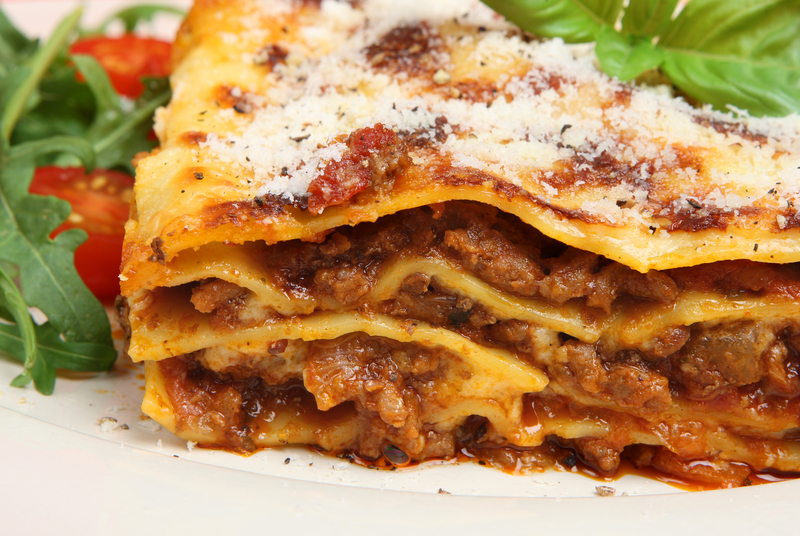 Lasagna is a beloved Italian dish that consists of layers of pasta, sauce, cheese, and often, various other ingredients like meat or vegetables.
Lasagna is a beloved Italian dish that consists of layers of pasta, sauce, cheese, and often, various other ingredients like meat or vegetables.
While the basic components of lasagna are fairly consistent, there is an ongoing debate among home cooks and culinary enthusiasts about the “right” way to layer lasagna.
Does it matter how you stack those layers, or is it just a matter of personal preference?
In this article, we’ll explore the different approaches to layering lasagna and whether it truly makes a difference in the end result.
Traditional Layering
Traditional lasagna layering typically involves three main components: pasta, sauce, and cheese.
Here’s a breakdown of the traditional layering process:
- Pasta Sheets
The bottom layer usually consists of cooked lasagna noodles, which serve as a sturdy foundation for the dish.
- Sauce
A generous layer of tomato sauce, often mixed with ground meat (like beef or pork) and seasonings, is spread over the pasta sheets.
- Cheese
A mixture of ricotta cheese, mozzarella cheese, and Parmesan cheese is sprinkled over the sauce layer.
- Repeat
This process is repeated until you run out of ingredients, usually ending with a top layer of cheese.
The Variations
 While the traditional method is the most common, there are several variations in layering lasagna, and these variations can be influenced by regional preferences, dietary restrictions, and personal taste.
While the traditional method is the most common, there are several variations in layering lasagna, and these variations can be influenced by regional preferences, dietary restrictions, and personal taste.
Here are some notable variations:
- Vegetable Lasagna
For those who prefer a meatless option, layers of roasted or sautéed vegetables, such as eggplant, zucchini, and spinach, can replace the meat layer.
- White Sauce Lasagna
Instead of a tomato-based sauce, some recipes call for a creamy béchamel sauce layered with the pasta and cheese, creating a decadently rich lasagna.
- Pesto Lasagna
Pesto sauce can be used in place of the tomato sauce, providing a fresh and vibrant alternative.
The Layering Debate
Now, let’s address the burning question: Does it matter how you layer lasagna?
The answer largely depends on your personal preferences and what you want to achieve with your lasagna:
Traditionalists argue that the classic layering method is the most authentic and provides the perfect balance of flavors and textures.
The combination of pasta, meaty tomato sauce, and cheesy goodness is a time-tested favorite.
Creative cooks may appreciate the flexibility to experiment with different layering techniques.
Variations can lead to unique and delicious results, catering to specific tastes or dietary restrictions.
Ultimately, the key to great lasagna lies in the quality of your ingredients, the seasoning, and proper cooking techniques.
Regardless of how you layer it, these factors can make or break your dish.
Bottom Line – Does It Matter How You Layer Lasagna?
 In the world of lasagna layering, there is no definitive right or wrong way.
In the world of lasagna layering, there is no definitive right or wrong way.
It all boils down to your preferences and the flavor profile you want to achieve.
Whether you opt for the traditional layering method, explore creative variations, or invent your own, the most important aspect is to savor the delicious layers of flavor that make lasagna a timeless and beloved Italian classic.
So, the next time you make lasagna, layer it the way that brings the most joy to your taste buds!


